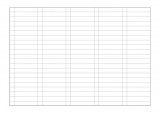Supervisor:
2010
Our diplomatic project concerns a designing procedure which is based on repetition and variation. The procedure we have followed, has as its starting point, a surface of A4 sized paper. Paper is a flexible material which, aside of being folded, offers the possibilities of being curved without being deteriorated and of being cut while remaining a single surface.
We designed a pattern on the paper and we continued by cutting along the lines of the pattern in such a way, in which the surface remains single. The surface is divided into horizontal strips which remain conjoined in some small parts. The form of the surface differentiates by removing, with displacement or rotation, the small parts of each strip. Any movement affects the whole of the surface, as all of the strips are conjoined in some parts and interact with each other. The surface is being stabilized in different forms by connecting the small parts of the strips with each other. According to which parts are connected with each other, different forms appear from the system.
The rules followed by the system are not restrictive. They have a range of flexibility. This is why every new application of the rules can produce a different result. According to where the strips are cut and how they are removed, the form appearing differentiates. This happens because of the flexibility of paper, which presents in its form, every different movement and influence as curvature. With each movement, the surface of paper gets an entirely new form.
It is characteristic that the system we have created hasn’t got specific scale. It acquires scale according to the location it is placed in and its function. While searching for the restrictions we will apply to the system, we focused on the city of Volos. We indicatively chose two different locations, Eleftheria’s square and the pier. We chose these two locations, to examine the difference of the adaption of the system in different scales and programs. Its location is related to different needs and functions. It is necessary that the system can be adapted to different scales and uses, so that it can serve different needs. To make our system more adaptable, we redefined some rules. First, we evaluated the proportions and the rhythm of the pattern. Despite of the possibility of scale changing, we created the possibility of changing the proportions of the surface, so that the surface gets more adaptable. By changing scale and proportions, the system becomes more flexible, so that it can serve different uses and be adapted in space.
Concerning the pier, we decided to reform the parking area. We, however, chose to concentrate on Eleftheria’s square and to focus on a smaller scale, resulting in the construction of objects of urban equipment. In order to redesign Eleftheria’s square we took into consideration the position of the site and its uses. We aimed to redesign the square so that it offers alternative choices concerning human action. We noted down some actions which are related to the movement and the attitude of a person in the city. We related these actions with restrictions that refer to space, so that people can perform them. We included these constraints as a parameter in the design of the objects. We examine, based on these constrains, how the curved forms, produced by the process of A4, can function in the human scale and serve human action. Our aim was to produce forms which incorporate different functions and, at the same time, enable alternative uses for humans. By focusing more on the objects of the square, our project ends in the construction of two objects of urban equipment in large scale.
